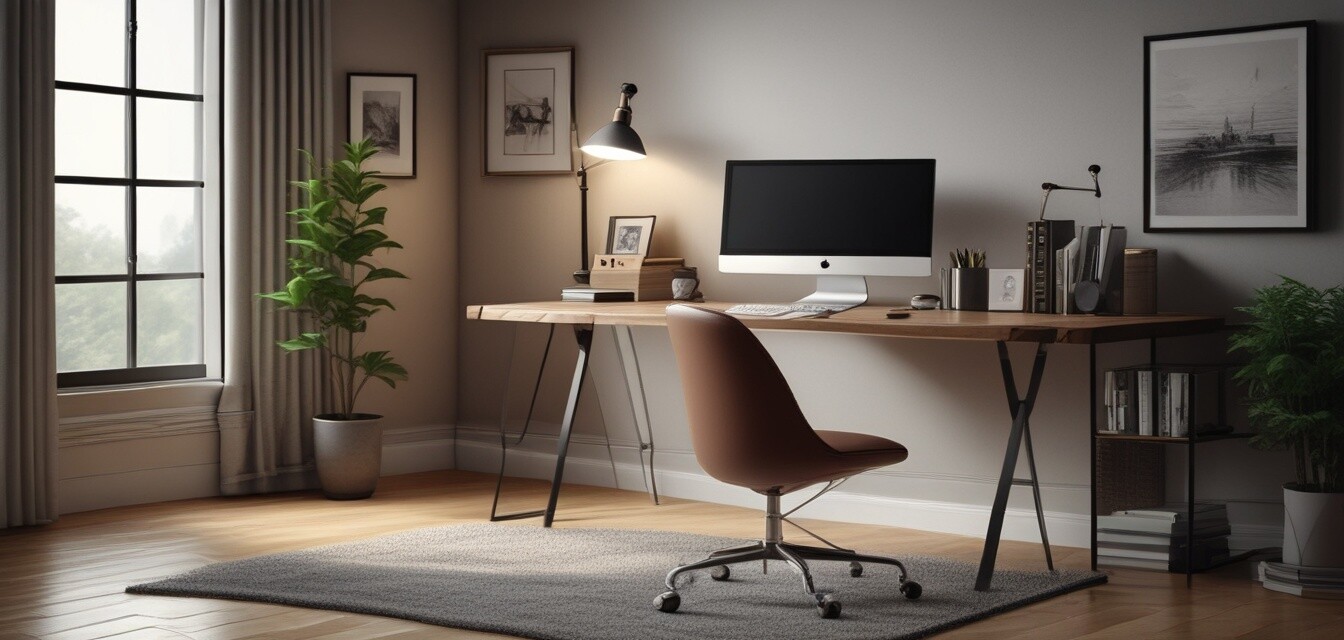
The impact of remote work on furniture design
- Remote work is transforming traditional furniture design, focusing on ergonomics and functionality.
- Innovative features such as adjustable desks and multi-functional storage solutions are becoming standard.
- Flexible and modular designs are increasingly popular in home office setups.
- Technology integration in furniture, like built-in charging stations, is on the rise.
- The trend reflects a shift towards creating a comfortable and productive home environment.
As the landscape of work evolves, so too does the design and functionality of home office furniture. The rise of remote work has prompted designers to rethink traditional workplace concepts and create solutions that cater to the unique demands of working from home. This article explores how remote work trends are influencing furniture design, making home office setups more efficient, comfortable, and aesthetically pleasing.
The Rise of Remote Work
Remote work has become a significant aspect of modern employment, driven by advancements in technology and a shifting perspective on work-life balance. This transition is not just altering where we work, but also how our workspaces are designed.
Statistics on Remote Work Adoption
| Year | Percentage of Remote Workers |
|---|---|
| 2020 | 42% |
| 2021 | 38% |
| 2022 | 32% |
| 2023 | 29% |
According to these statistics, a significant portion of the workforce has transitioned to remote arrangements since 2020. While the numbers have shifted slightly, the impact of this trend on furniture design remains profound.
Key Features of Home Office Furniture
With the growing demand for home office solutions, furniture design has adapted to meet the specific needs of remote workers. Let's explore some key features that are becoming staples in home office furniture.
Ergonomics
One of the primary focuses in the design of home office furniture is ergonomics. An ergonomic setup is crucial to promote health and productivity, minimizing the risk of strain and injury caused by prolonged sitting and improper posture.
- Ergonomic chairs that offer lumbar support.
- Adjustable desks that can be switched between sitting and standing positions.
- Keyboard trays and monitor stands to optimize screen height.
Functionality
Functionality is another essential aspect that furniture designers are prioritizing. As remote work often requires multitasking, furniture pieces are now being designed with versatility in mind.
- Desks with built-in storage to keep the workspace tidy.
- Modular designs that can be easily reconfigured.
- Integrated technology features, such as USB ports and charging stations.
Trends in Furniture Design
As designers innovate to meet the needs of remote workers, several trends are emerging in home office furniture design:
Flexible and Modular Designs
Flexible furniture allows users to customize their workspace according to their needs, promoting creativity and productivity. Modular desks can be expanded or contracted based on the tasks at hand.
Technology Integration
With technology playing a central role in remote work, furniture designs have begun to incorporate tech-friendly features:
- Power outlets embedded in desks.
- Wireless charging pads for devices.
- Smart desks that adjust height automatically based on user preference.
Considerations for Choosing Home Office Furniture
To create an effective home office, here are several considerations to keep in mind when choosing your furniture:
- Space and Layout: Measure your workspace to ensure your furniture fits properly.
- Style: Choose a design that matches your personal taste and complements your home decor.
- Materials: Look for durable and easy-to-clean materials that will withstand daily use.
Finding the Right Balance
Balancing aesthetics, comfort, and functionality is essential in remote work furniture design. It's important that every piece in your home office serves a purpose while still being visually appealing.
Pros
- Increased comfort and productivity.
- Customizable setups that adapt to individual needs.
- Enhanced organization with integrated storage solutions.
Cons
- Initial investment might be higher for quality ergonomic furniture.
- Limited options for compact spaces.
- Technology integration may complicate setups for some users.
The Future of Home Office Furniture Design
As remote work continues to influence the furniture industry, we can expect further innovations in design and functionality. The focus will likely remain on creating sustainable, tech-savvy, and user-friendly solutions.
To stay updated on the latest trends and find great home office setup solutions, be sure to check our News and Trends section.
Conclusion
The impact of remote work on furniture design cannot be underestimated. As our workspaces shift from corporate offices to home environments, the need for furniture that meets our evolving demands is more crucial than ever. By understanding these trends and choosing the right furniture pieces, we can create productive and enjoyable workspaces at home.
Further Reading
Explore more articles on how to optimize your home office setup: